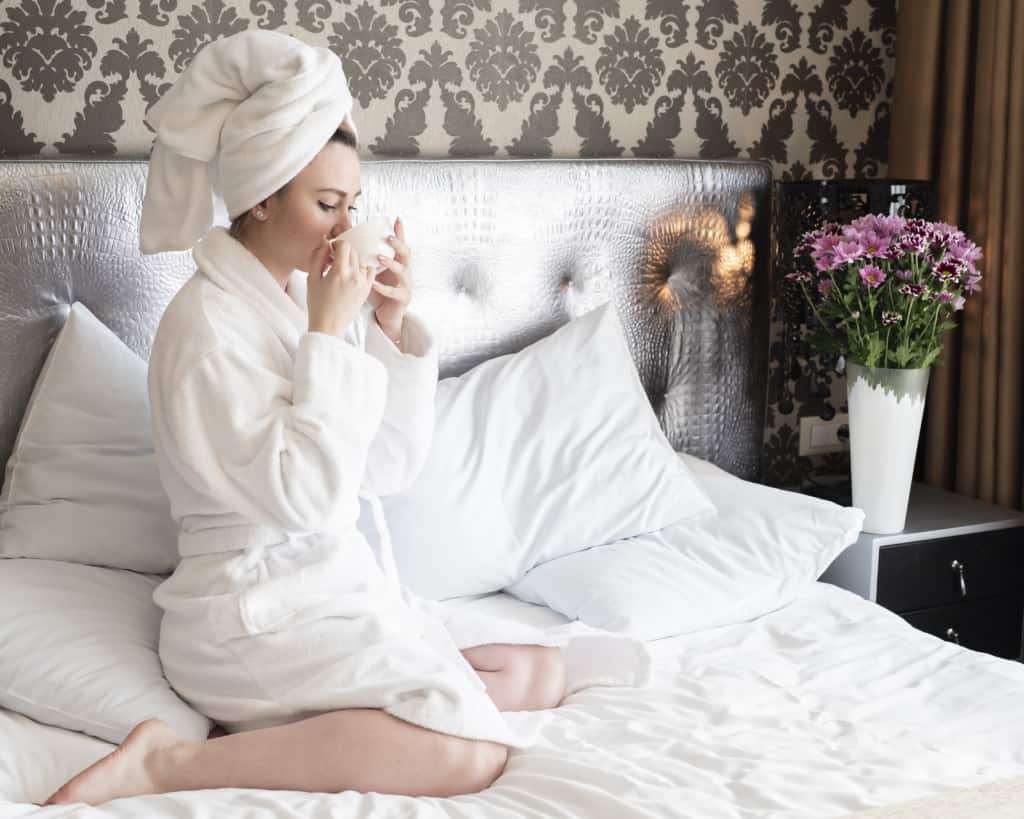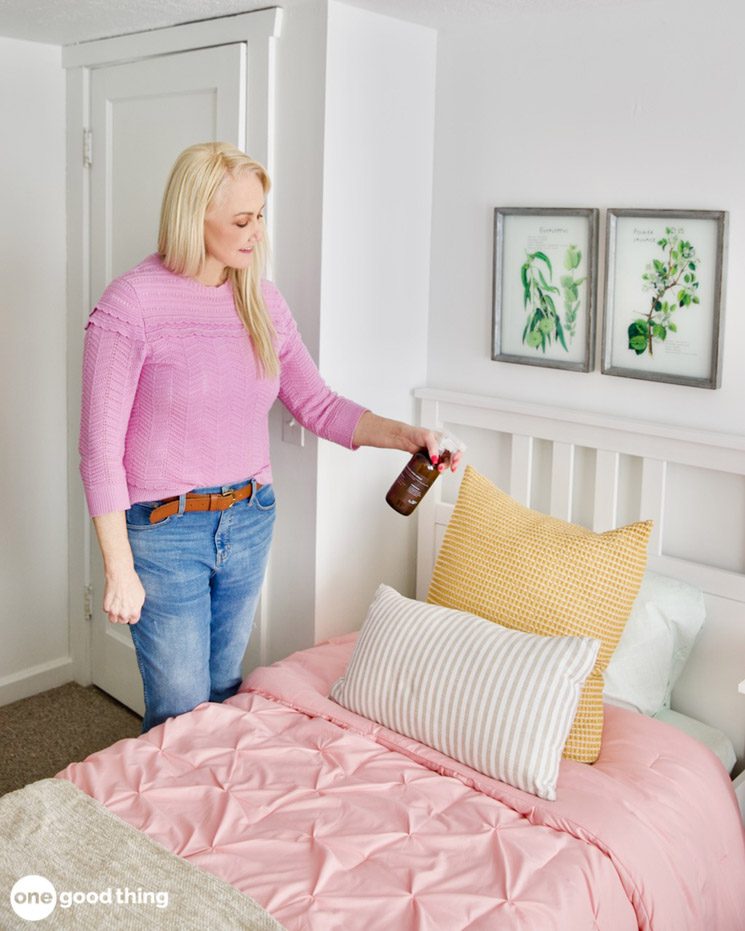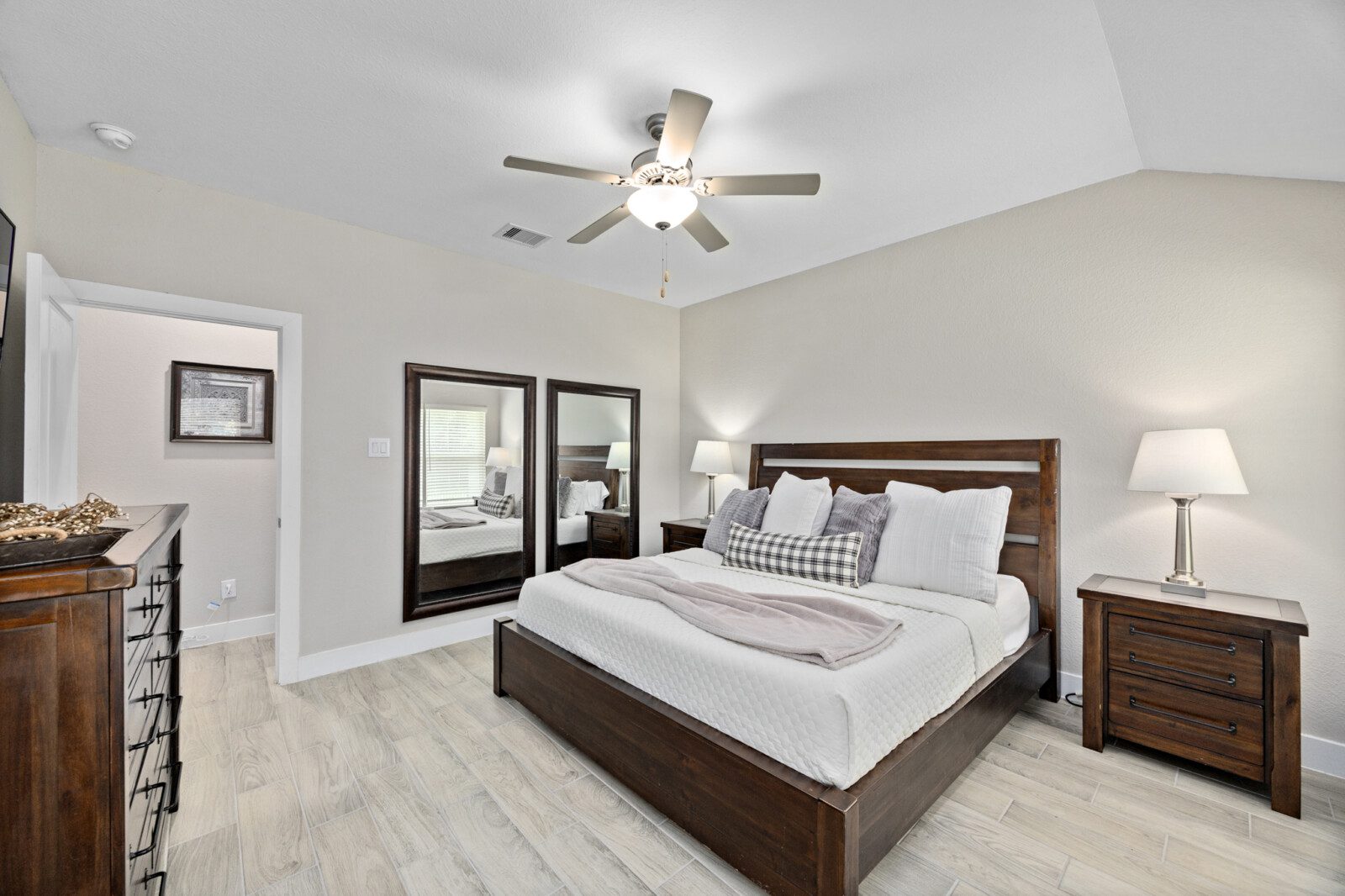When it comes to turning your vacation rental into a sanctuary of rest, you can’t overlook the power of natural materials. Whether it’s the bed frame, the linens, the floor, or the accents — using organic, earth-derived materials helps create an environment where guests sleep better, stay longer, and rave in your reviews. In this post, we’ll explore 7 compelling reasons that help explain why guests sleep better surrounded by natural materials.
1. Temperature & Moisture Regulation

One of the most direct ways guests sleep better surrounded by natural materials is that those materials tend to regulate temperature and absorb moisture much more effectively than many synthetics. For instance, natural fibers like linen, wool or cotton can allow more airflow, wick away moisture, and prevent night sweats or chills. Intelligent Living+2Mattsons Beds+2
Similarly, solid wood bed frames and furniture don’t conduct cold or heat the way metal or laminate often does; they create a more stable micro-environment around the sleeper. One study showed that bedrooms with a greater amount of wood use were significantly associated with higher comfort and fewer insomnia-related symptoms. SpringerOpen+1
Tip for your vacation rental: Use a solid wood bed frame, organic cotton or linen sheets, and avoid heavy synthetic upholstery in the bedrooms. That way, guests can sleep in a room that “breathes.”
2. Improved Air Quality & Reduced Allergens

Another major benefit of being surrounded by natural materials: The air quality improves. Natural materials like wool, un-finished wood, and plant-based textiles tend to emit fewer volatile organic compounds (VOCs) than synthetic materials, and they are less likely to trap dust mites or mould. Mattsons Beds+1
For guests who may be sensitive or simply appreciate a clean, fresh smell and feel, this matters. Lower allergens, less off-gassing, and material choices that feel “clean” help them fall asleep easier and stay asleep.
Tip: Choose low-VOC finishes on wood furniture, avoid heavy synthetic carpets, and pick natural textiles — e.g., organic cotton, wool rugs, linen drapes.
3. Psychological/Sensory Cue for Rest & Relaxation

Sleep isn’t just about body temperature and air – it’s also about mind and mood. When guests are surrounded by natural materials, the tactile, visual and even olfactory cues help shift them out of “daytime alert” mode into “bedtime ease.”
For example, one biophilic-design article notes that textured surfaces like linen bedding, wool throws, wood furniture and stone or clay elements help the nervous system relax, lower stress hormones like cortisol, and support better sleep. Embrace 360+1
Tip: Use natural material accents (a rattan basket, jute rug, raw wood lamp base) rather than glossy plastic or synthetic finishes. These tactile cues help set a restful mood.
4. Sustainable & Quality Impression

Guests today often appreciate a “luxury meets nature” feel — which means natural materials not only help with sleep, but also add perceived value and comfort. Natural textiles get softer over time, natural wood has grain warmth and depth, and the overall aesthetic conveys a sense of quality and care. Intelligent Living+1
When guests feel they are sleeping in a space that has been crafted with intention, they tend to feel more at ease, more respected. That comfort can translate into deeper, more relaxed sleep.
Tip: Highlight in your property description that you use natural materials (solid wood furniture, organic linens, natural fibre rugs) — this reinforces the value and may encourage higher booking rates and reviews.
5. Reduced Stimulation & Clutter

Natural materials often come in quieter hues and textures (think warm wood tones, matte linen, neutral fibres) rather than high-gloss plastics, bright synthetic colours or distracting patterns. Those calmer visual cues help the brain wind down. For example, design experts recommend wood headboards, cotton/linen textiles and natural-tone decor to create a restful environment. Better Homes & Gardens+1
So yes: guests sleep better surrounded by natural materials because those materials help the environment feel restful rather than stimulating.
Tip: Keep colours soft and materials simple. Use natural tones, avoid high-gloss plastics, and maintain a minimal but warm décor.
6. Durability & Comfort over Time

Natural materials often win when it comes to durability and comfort which translates into consistent guest experience. Fabrics like linen and organic cotton often get softer with washes and remain comfortable. Wood furniture lasts, it doesn’t sag or squeak like cheaper synthetic frames, and so the night’s sleep isn’t interrupted by creaks or material-breakdowns. Intelligent Living+1
For a vacation rental, this means fewer complaints, fewer disruptions, and better reviews — because the guest wasn’t awake at 3 AM bothered by a squeaky bed or synthetic sheet that felt hot and clammy.
Tip: Invest in good-quality natural material furniture and textiles. Over time, the upfront cost pays off in fewer maintenance headaches and enhanced guest satisfaction.
7. Connection with Nature & Biophilic Design

Human beings innately respond to nature. The concept of biophilic design shows that being surrounded by natural elements — including materials like wood, stone, and textiles made from plant fibres — lowers stress and improves recovery, which includes restorative sleep. Avocado Green® Magazine+1
So when guests sleep surrounded by natural materials, they may feel a subtle but real connection to a calmer state of mind, which primes the body for deeper rest. For a vacation rental especially, this helps transport the guest out of the everyday and into getaway mode.
Tip: Think about the full sensory experience: wood floors or frame, linen sheets, wool throw, natural fibre rug, maybe a clay lamp base or stone nightstand. Together these natural materials create a cohesive sanctuary feel.
Putting It All Together: Your Rental’s Sleep Experience

Given your properties and your focus on providing elevated guest experiences (whether in Houston or elsewhere), this is how you can integrate the idea of natural materials to help guests sleep better in your homes:
-
Sheets & Bedding: Use organic cotton or flax linen for sheets and duvet covers. These are natural materials that allow airflow, wick moisture, regulate temperature, and feel luxurious. (See review of natural bedding material benefits.) Putnams+1
-
Bed Frame & Furniture: Choose solid wood (oak, pine, teak) or bamboo furniture rather than metal frames or laminate. A natural finish (oil rather than lacquer) helps reduce VOCs and gives a warm feel. InStyle Furniture+1
-
Textiles & Rugs: Use wool or jute rugs, linen or cotton throws, rather than synthetic fibre carpets. Natural patterns and textures deepen the sensory comfort. (See benefits of natural materials in textile applications.) tricosy.com
-
Decor & Wall Finishes: Wall paints with low/no VOCs, accent stone or clay elements, rattan baskets, wood ceiling beams or floorboards. These enhance the natural material feel. geophilia.org
-
Guest Communication: In your property listing or welcome pack, mention that the bedroom features natural linens, solid wood furniture, natural fibre rugs, and that you’ve designed the space for better rest. This sets expectations and elevates perceived value.
-
Maintenance & Cleanliness: Natural materials may require care (wood furniture may benefit from oiling, linen bedding may need different laundering), so build this into your housekeeping routine to keep the materials performing and looking great.
-
Consistency Across Properties: Whether in Houston, Cypress, Seabrook or elsewhere, apply these principles consistently. Guests who stay across your properties will recognize the style and comfort level — that can build brand loyalty.
In Summary
Guests sleep better surrounded by natural materials for very practical reasons: better temperature control, reduced allergens, quieter visual and tactile cues, higher quality feel, and a deeper connection to nature that supports relaxation and restorative sleep. By designing your bedrooms with natural materials — from the bed frame and linens to rugs, drops and accents — you’re not just decorating: you’re engineering a superior sleep experience.
